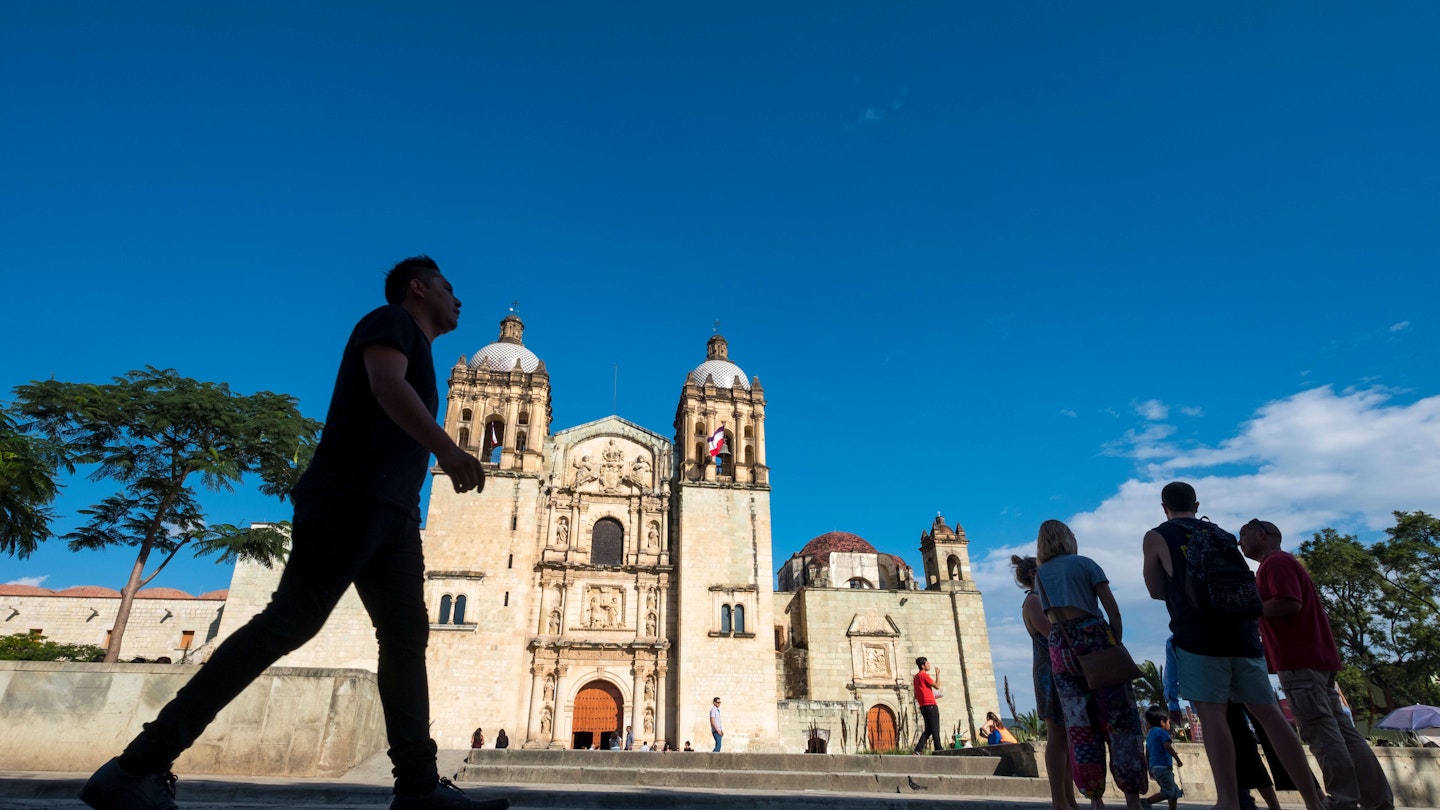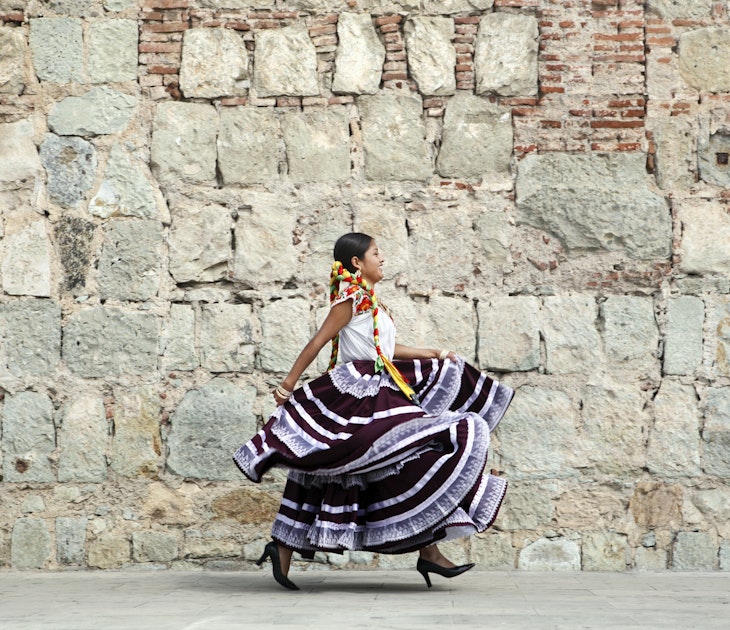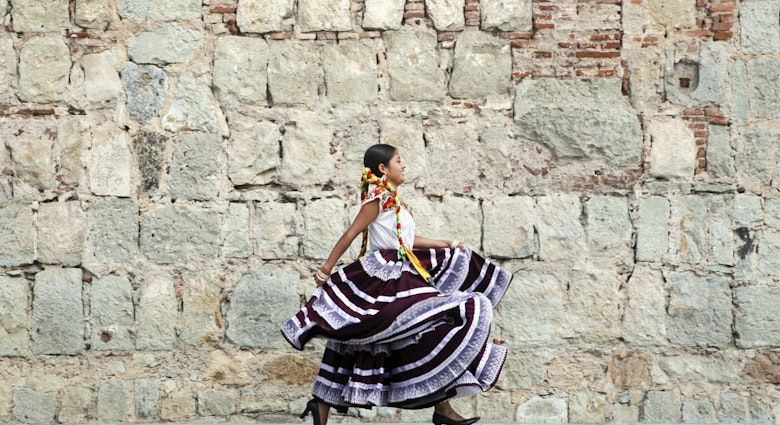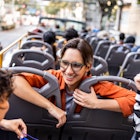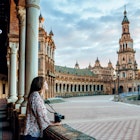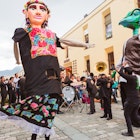As you navigate fast-growing Oaxaca, expect a mixed bag of readily available transportation and notoriously frustrating traffic. For the most part, the easily walkable historic center, reliable mass transit and growing cycling culture make it simple to get around, especially in downtown, where visitors spend most of their time.
But as any local will attest, frequent gridlock and road blockades can make life hell on wheels in the busy capital. If you have a vehicle, you'll find it far more useful for venturing out to the nearby mountain towns, craft villages and ancient Zapotec ruins, all just short day trips away. Meanwhile, back in the city, save yourself the headache and let the affordable buses and taxis do the driving.
Here's the lowdown on how to get around in Oaxaca.
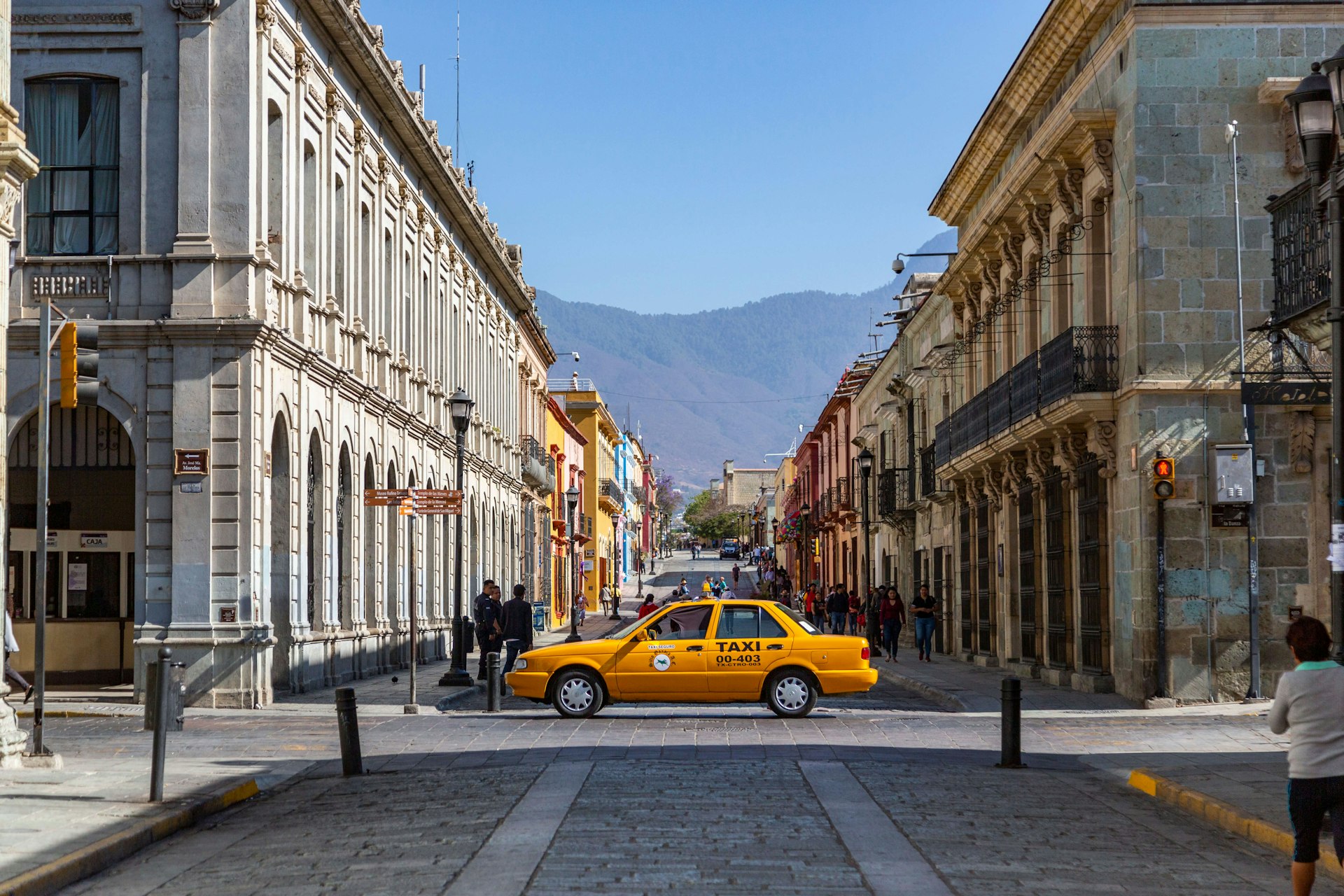
Hail taxis and ride-shares to explore Oaxaca and beyond
Rest assured that it's generally considered safe to flag down street cabs in Oaxaca, and with fares ranging between M$40 to M$60 (US$2 to $3) within the central area, it's quite a bargain. The app-based ride-hailing company Didi provides service in Oaxaca under a partnership with a group of yellow taxis, and it's reasonably priced as well.
Colectivos, shared taxis that run along fixed routes in and around Oaxaca, are cheaper than regular cabs, but you'll be squeezed into a car with at least three other passengers, so social distancing pretty much goes out the window. The maroon-and-white sedans congregate on the northeast side of Oaxaca's 2nd-class bus station, and they display their destination on the windshield. If you're heading to El Tule, Teotitlán del Valle or Mitla, pile into a colectivo waiting on the main road just east of the Vasconcelos baseball stadium.
Hop on an inexpensive bus to reach just about any neighborhood
Dirt-cheap and generally efficient, public buses (M$8/US$.40) go nearly everywhere in the city, while numerous private lines run to Oaxaca's outlying towns with frequent service departing from the 2nd-class bus station and several small terminals on the south end of Bustamante street.
From the avenue outside the 1st-class bus station, "Juárez" buses will take you three blocks east of the Zócalo, while the "Tinoco y Palacios" line plies a route three blocks west of the main square. Drivers carry change, and you can hail them from practically any corner.
The new CityBus system operates along multiple routes, one of which cuts through the historic center on Avenida de la Independencia and heads east to the 1st-class bus station.
At Mina 501, Autobuses Turísticos has hourly morning and early afternoon departures to the astonishing Zapotec ruins of Monte Albán.
Top things to do in the culturally rich Oaxaca City
Cycle through history in colonial downtown
In an ongoing push to make Oaxaca more bicycle-friendly, the city is regularly expanding its network of designated bike lanes, which makes for a safer ride as you roll through a downtown area packed with some 1200 historic monuments. Having said that, always watch out for careless drivers.
Mundo Ceiba rents bikes and organizes the Paseo Nocturno, a communal nighttime ride traversing the cobbled streets of downtown. Cyclists meet at the Templo de Santo Domingo just before 9pm every Wednesday, Friday, Saturday and Sunday. The leisurely and highly sociable 90-minute outing covers about 8km (5 miles).
To pedal around in the countryside, book a tour with Mexican Olympic cyclist Pedro Martínez, who leads groups to a series of caves and a swimmable river in the heart of mezcal country.

Driving takes you to nearby towns with rich traditions
Driving in the capital requires patience, particularly in the busy historic center, where traffic snarls and a lack of street parking can be downright maddening, so simply ditch the car and explore the Centro on foot.
Cars do, however, make sense for getting out into the surrounding areas and seeing a completely different side of Oaxaca, such as the wildlife-rich mountain villages of the Pueblos Mancomunados, the mezcal-producing region of Santiago Matatlán and several small towns south of the city that craft high-quality folk art like barro negro (polished black pottery) and alebrijes (colorful wooden animal sculptures).
A vehicle is especially practical when traveling with children. Economy car rentals usually start at about M$800 (US$40) per day with daños a terceros (liability coverage) included, but you can score better deals online.
Your Oaxaca road trip starts here: 5 ways to explore Mexican culture
Tips for driving in Oaxaca: Should you decide to drive in the congested city center, keep in mind that many downtown streets have no stop signs or traffic lights but most motorists in Oaxaca abide by "uno por uno" etiquette, meaning the first vehicle to arrive at an intersection has the right of way.
Beyond city limits, traffic is usually light, but expect some poorly maintained roads with a slew of potholes and unmarked speed bumps. Also, be aware that protesters regularly stage blockades in Oaxaca. If you come across a roadblock, seek an alternative route whenever possible.

Why walking is my favorite way to experience Oaxaca
You know you're living that charmed Oaxaca life once you find yourself making the rounds between the convivial cafes, glorious old food markets and intimate mezcal joints – plus, wandering around on foot means you don’t have to deal with the traffic. On my walks through the city center, I've stumbled upon colorful processions playing soulful brass band music, a plethora of provocative street art, astounding baroque architecture and mole tamales to die for.
Accessible travel in Oaxaca
The historic center's cobbled streets and narrow sidewalks can be difficult to navigate in a wheelchair at times; however, there are a growing number of restaurants, hotels and tourist attractions with ramps and drop-down curbs. The visually impaired must also contend with street crossings lacking audio signals.
CityBus, Oaxaca's new bus network, is equipped with wheelchair lifts. Unfortunately, you won't find private lift vans for rent, only large passenger vans without platforms or ramps.
Notable sights in Oaxaca with wheelchair access include the Andador Turístico, Monte Albán, the Zócalo and Templo de Santo Domingo.
The website Accessible Mexico has listings and maps of Oaxaca eating establishments and sights with wheelchair access; for additional information, see Lonely Planet’s accessible travel resources.
You might also like:
When to visit Oaxaca for festivals, food and fun
10 things to know before going to Oaxaca, one of Mexico's most intriguing destinations
Top 19 absolutely unmissable experiences in Mexico

